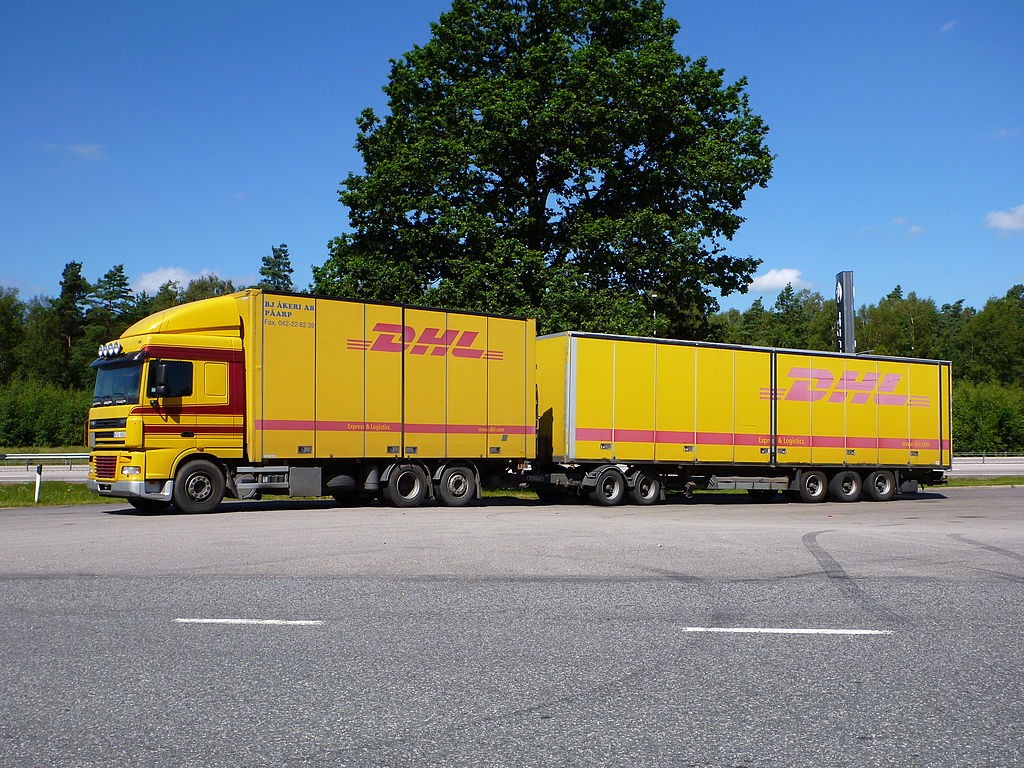Hauliers operating in Sweden will be allowed to use three additional vehicle combinations exceeding the standard length of 25.25 metres from 15 April 2025, as part of the country’s long-standing roadmap for extended modular vehicles. The new rules, published by the Swedish Transport Agency (Transportstyrelsen) under regulation TSFS 2025:17, apply on sections of the road network that have already been approved for vehicle combinations of up to 34.5 metres.
Although large parts of Sweden’s road infrastructure have been opened for longer combinations, uptake among hauliers has been relatively limited due to strict technical requirements and cost-related concerns. Until now, only two types of extended combinations were authorised. The new regulation increases this number to five.
One of the new configurations – the Nordic combination – has an estimated total length of around 27 metres and consists of a rigid lorry (up to 12 m), a dolly, and a semi-trailer up to 13.65 m. Unlike conventional trailer setups, this configuration is necessary due to national regulations that prohibit using trailers longer than 12 m in combinations exceeding 24 m.
Other newly permitted setups include the B-double, which resembles existing 25.25 m link combinations but allows a longer intermediate load carrier (up to 10 m), and the C-double, which consists of a rigid lorry with two drawbar trailers, each limited to a maximum height of 4.0 m.
These updates follow the proposal the Swedish Transport Agency sent out for consultation in late 2024, and align with legislation introduced by the Swedish government in August 2022.
Key technical requirements and legal details
According to the regulation TSFS 2025:17, the following conditions apply to vehicle combinations exceeding 25.25 metres and up to 34.5 metres:
The new regulation applies only on approved roads, as designated under Sweden’s Traffic Ordinance. It enters into force on 15 April 2025, replacing TSFS 2023:42.
The five approved configurations are as follows:
- A-double: Tractor + semi-trailer + dolly + second semi-trailer
- AB-double: Truck + dolly + link semi-trailer + semi-trailer
- B-double: Tractor + link semi-trailer + semi-trailer (link ≤12 m)
- C-double: Truck + two drawbar trailers (max height: 4.0 m)
- Nordic combination: Truck + dolly + semi-trailer (~27 m total length)

Image credits @ Transport Styrelsen
Technical requirements
All vehicle combinations must be equipped with electronic braking systems featuring ABS and automatic brake adjustment. Vehicles with up to three axles are also required to have stability control systems, and drivers must have visibility over the vehicle’s right-hand side from the cab.
Only the truck’s front axles may be steerable at speeds over 40 km/h, while certain trailer axles must be actively or passively steerable at lower speeds (under 30 km/h) to improve manoeuvrability.
Coupling load ratings
The regulation specifies minimum dynamic and vertical load capacities for all coupling devices, expressed as D-, DC-, and V-values. These values vary depending on the configuration and gross weight of the vehicle combination. For instance, the dolly in a Nordic combination must be rated for a D-value of at least 130 kN.
Mandatory rear signage
Vehicles longer than 25.25 metres must display a standardised reflective sign on the rearmost trailer. The sign must feature a yellow background with a red border, use a specific font and layout, and be mounted no higher than 2.0 metres above the road surface.

Image credits @ Transport Styrelsen
Speed limit regulation clarifies conditions for double trailer combinations
In a parallel move, the Swedish Transport Agency has also published TSFS 2025:18, which raises the maximum permitted speed for trucks towing two trailers to 80 km/h under specific conditions. The regulation enters into force on the same day as TSFS 2025:17.
The new speed limit applies only to vehicle combinations up to 25.25 metres in length. To qualify, vehicles must be fitted with anti-lock braking systems (ABS) and must feature two articulation points. No axles other than the truck’s front axle(s) may be steerable at speeds over 40 km/h.
Height restrictions also apply. If the rear trailer is a drawbar trailer, it must not exceed 4.0 metres, including cargo. If the rear trailer is a semi-trailer, this limit may be exceeded only if the distance from the kingpin to the axle is at least 7.5 metres.









